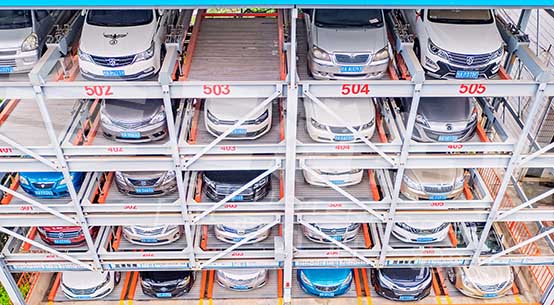
- Home
- Profile of Sampu
- Garage type
- Classic cases
- Manufacturing strength
- News and information
- Contact us
In 1885, a German engineer created the world's first car, and he is also the founder of a well-known car brand. With the development of technology, in the 21st century, almost every household has their own small car. With the increase of private cars, the rise of the automotive industry is also inseparable from the garage. Traditional garages belong to flat garages, where only a fixed number of cars can be parked in a single place. However, the lack of space for parking has become a problem. To alleviate this phenomenon, mechanical parking spaces were created.

Mechanical parking spaces are movable but not independent spaces, mainly relying on the overall movement of machinery and the exchange of space to provide individual parking spaces for cars. In the traditional sense, parking spaces are fixed and have independent spaces with a certain boundary, and there are specific requirements for building area and building height. This results in a significant difference between the two. There are several ways to implement mechanical parking, all of which utilize small spaces to reduce ground area usage and are easy to operate. It achieves this by using mechanical platforms for lifting up and down, or by moving the vehicles laterally to park or retrieve them, thereby increasing the number of parking spaces and enabling flexible changes in parking spaces. The most commonly used mechanical parking system is the lane-stacking type, which can be set up indoors, outdoors, underground, or above ground based on different site requirements. Due to its ability to store a large number of vehicles and its safety and reliability, the lane-stacking type is the preferred choice for most.
Large shopping malls or event venues have installed mechanical parking spaces, which are very convenient to use. For households with private cars, it is also convenient as they no longer have to worry about finding parking spaces in advance or parking in distant areas. When private cars are not occupying the road, and vehicles are parked where they should be, the civilized appearance of the city is displayed. Therefore, whether it's for the appearance of the city or for traffic safety, development is heading in a positive direction. Regions like Zhejiang and Shenzhen have also introduced some usage regulations for mechanical parking spaces, laying the groundwork for the legal and compliant use of these spaces in the future, allowing vehicle owners to see its legitimacy.